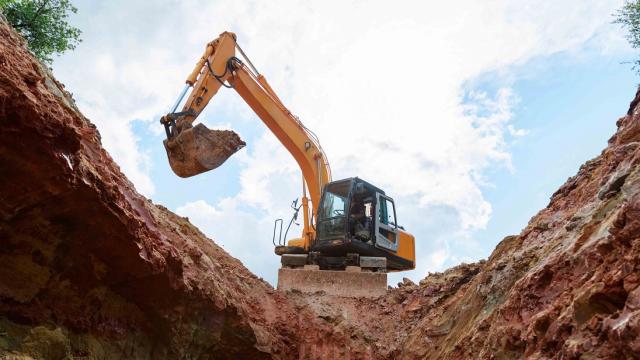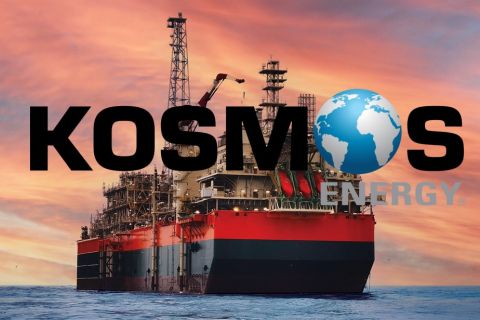
The Red Oak Pipeline LLC, the joint venture of Phillips 66 and Plains All American Pipeline, is a go.
The project has been anticipated for over a year, but it was made official this week when both companies announced they would move forward with construction of the 50:50 project that will provide crude oil transportation service from Cushing, Okla. and the Permian Basin to Corpus Christi, Ingleside, Houston and Beaumont. The $2.5 billion, 30-inch pipeline is expected to be online as early as first-quarter 2021, subject to applicable permits and regulatory approvals.
It seems like a huge win in the never-ending quest to move the overflow of production in the Permian, but Bernstein Midstream isn’t so sure the Red Oak Pipeline is needed. Bernstein’s report, authored by Midstream analyst Jean Ann Salisbury, said two new pipelines from Cushing to the Gulf could mean the end of Magellan’s Voyager Proposal and Tallgrass’s Seahorse as the projects are direct substitutes.
Salisbury expressed concern about crude overbuild on that route. The report questions whether even one new project is needed.
The report says that even in the best case scenario, Red Oak—with capacity of about 800,000 barrels per day (bbl/d) to the coast—can’t be filled. And if that is the case, Bernstein’s position is it will result in crude overbuild.
Bernstein goes on to speculate that the additional pipeline projects will trim the 2021 WTI-Brent differential to less than $4 a barrel (bbl), which is way below the current curve of $6.50.
“At first we strongly disliked this project,” Salisbury wrote. “We still don’t love it for what it does to the aggregate crude pipeline market, but Plains’s position is not terrible; they will likely be able to hit 8x EBITDA, but will bring down returns and volumes for incumbents Seaway.”
Of course, the stakeholders in the Red Oak deal see it differently. They say Red Oak will be good for market as it will mean more product making it to market from Cushing and the Permian.
“We are pleased to partner with Plains to build Red Oak,” said Greg Garland, Phillips 66 chairman and CEO. “The pipeline provides a competitive outlet for shippers to access the key market centers along the Texas Gulf Coast from Cushing and the Permian. This investment aligns with our long-term strategy to grow our midstream business with projects generating stable, fee-based earnings while further enhancing integration across our value chain.”
Greg Haas, director of integrated oil and gas at Stratas Advisors, sides with the concerns of overbuilding in the Bernstein report.
“I generally agree that production gains inland are likely to disappoint,” Haas said. “That means low potential utilization on existing or new pipelines carrying crude from the Bakken, Scoop/Stack or Rockies.
“Furthermore, some of the crude from these plays or from the import markets as originated in western Canada may go to Louisiana rather than Houston or the Texas Gulf Coast via the existing Diamond pipeline and its planned expansion, through the soon-to-reverse Capline and through the planned Seahorse pipeline.”
The report makes the connection that adding Red Oak and other expansions would result in about 75% utilization after 2021, or about 3.3 million bbl/d of capacity out of Cushing where it’s 100% today. Seaway’s 10-year contract expires in 2021-2022 and current long-term rates for Seaway and Market Link are about $2.30/bbl for light. The Bernstein report says that will make it difficult to charge more than $2/bbl.
“We expect only slight net growth in the Bakken, Rockies and Midcon to 2025,” Salisbury wrote. “Permian flows to Cushing will fall next year and be eventually replaced by Canadian volumes. So, we expect total flows trying to leave Cushing in 2025 will be up only 300,000 bbl/d vs. today. This suggests that we needed a little more capacity but not an 800,000 bbl/d megapipe.”
Overall, the Bernstein report says Red Oak and Liberty should be the last crude greenfield pipelines built for a while. The report goes on to conclude that any crude greenfields from this point that don’t unlock Canada crude are unnecessary unless U.S. production drastically exceeds expectations.
Recommended Reading
E&P Earnings Season Proves Up Stronger Efficiencies, Profits
2024-04-04 - The 2024 outlook for E&Ps largely surprises to the upside with conservative budgets and steady volumes.
Some Payne, But Mostly Gain for H&P in Q4 2023
2024-01-31 - Helmerich & Payne’s revenue grew internationally and in North America but declined in the Gulf of Mexico compared to the previous quarter.
Uinta Basin: 50% More Oil for Twice the Proppant
2024-03-06 - The higher-intensity completions are costing an average of 35% fewer dollars spent per barrel of oil equivalent of output, Crescent Energy told investors and analysts on March 5.
In Shooting for the Stars, Kosmos’ Production Soars
2024-02-28 - Kosmos Energy’s fourth quarter continued the operational success seen in its third quarter earnings 2023 report.
M4E Lithium Closes Funding for Brazilian Lithium Exploration
2024-03-15 - M4E’s financing package includes an equity investment, a royalty purchase and an option for a strategic offtake agreement.





